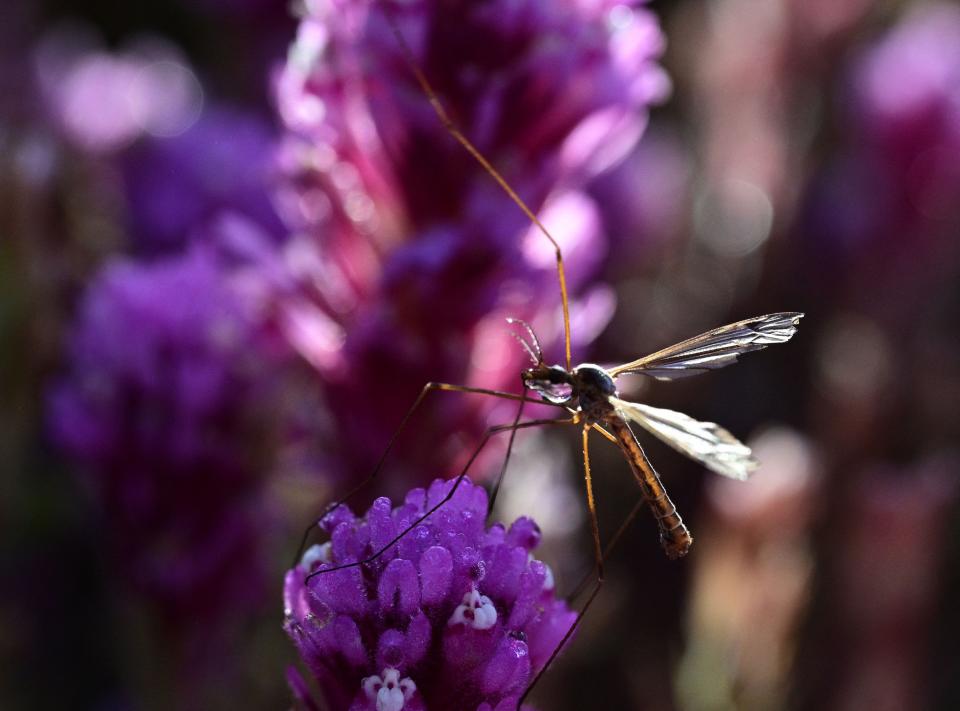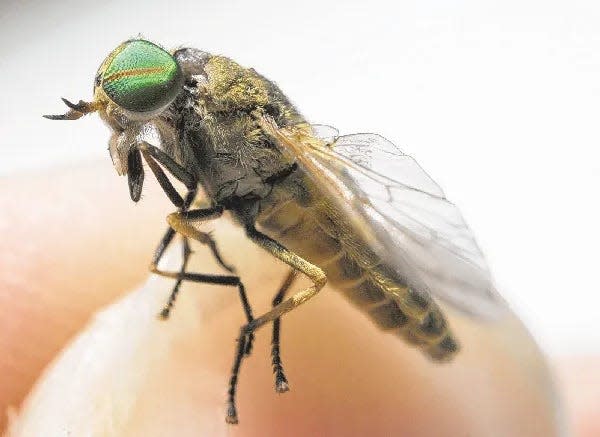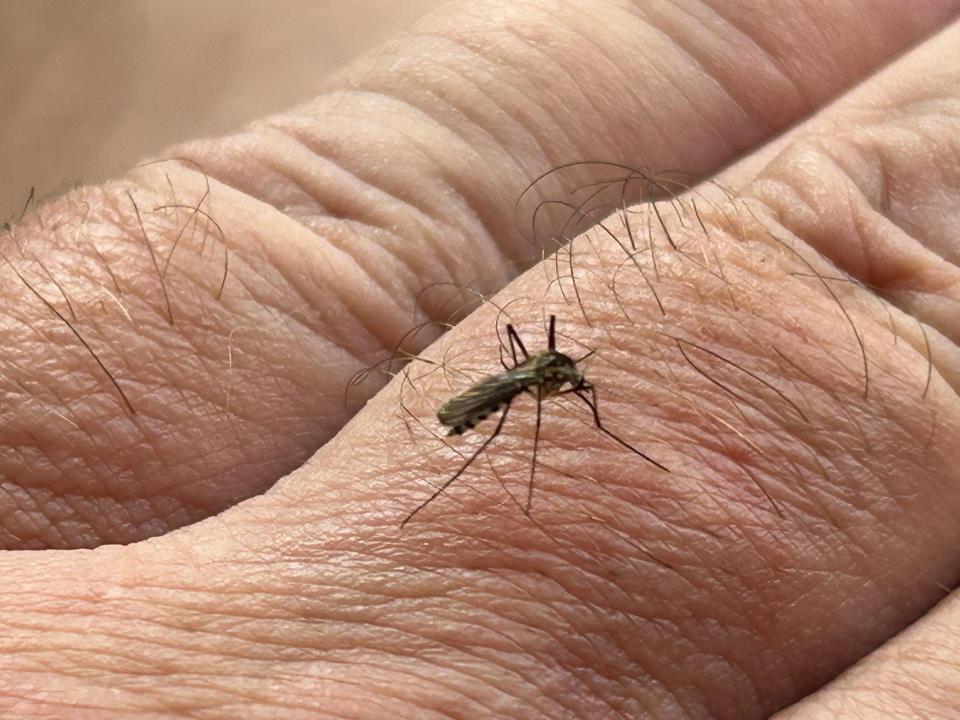Mosquitoes, crane flies and greenheads buzzing around Jersey Shore. Here's when to worry
It's flying around the Jersey Shore as well as your ears and ankles. What's that flying insect? And does it bite?
This time of year, all sorts of flying bugs are dive-bombing beachgoers for a quick blood meal. Mosquitoes, midges, and the dreaded greenhead fly are out and about making the outdoors less-than-pleasant for their victims.
While many varieties of flying insects in New Jersey are completely harmless to humans, others can leave itchy or painful bites.
Midges, gnats and no-see-ums
Non-biting midges are common in New Jersey in spring, typically starting in March and April, said Michael Senyk, superintendent of the Ocean County Mosquito Commission, which monitors mosquito-borne diseases in the county.
Midges are often called gnats or "no-see-ums" due to their tiny size, he said.
"They're actually sand flies," Senyk said. "They almost look like … someone threw pepper on your arms. That's how small they are. They do bite.
"What's very strange about this year is they tend to make their presence known around Memorial Day, and they're bad for a couple of weeks," he said. "Then, as the heat of the summer comes in, they tend to slowly disappear. I don't know what's going on with this year, but they seem to have been persisting."
Midges love coastal, damp environments as well as marshes, swamps and farms, according to the U.S. Environmental Protection Agency. The females bite, predominantly at dawn and dusk, according to the agency.
Senyk said midges are common in lagoon communities and along the New Jersey coast.

Crane flies
These flying insects are larger than mosquitoes, but are sometimes confused with their blood-sucking distant insect relatives.
People often wrongly believe crane flies, with their long legs and similar shape to mosquitoes, are male mosquitoes, said Senyk.
"They're not. Male mosquitoes are actually smaller than the female," he said.
Unlike mosquitoes, crane flies are harmless to humans, despite their large size, he said. They tend to breed in soil or creeks and are attracted to lights around nearby human homes, Senyk said.
Summer dining: Ahoy! Try these 12 dock-and-dine restaurants at the Jersey Shore
"They do not bite. They cannot harm you," he said. "They don't have the mouthparts to bite."
They feed on dew and nectar during their short lives, which last just a few days, according to Entomology Today, a website for insect experts.
Crane flies are common in New Jersey in late spring, summer and early fall and are an important food source for bats and numerous bird species, Senyk said.

Greenhead flies
One of the most dreaded flying insects of the Jersey Shore is the greenhead fly, because Its bite is among the most painful of the region's flying insects.
"There's been a very high population of them (this year)," Senyk said.
Female greenheads bite and can travel long distances from their homes in coastal marshes for a meal, according to Rutgers University's Department of Entomology. Greenhead populations typically peak in July, but they can be a painful pest through September, according to the university.
Greenhead flies are aggressive and "vicious," Senyk said.
"The good news … with them, besides the biting and the nuisance, which is terrible … is they do not spread disease," he said.
That may be little consolation for those who are bitten. Greenhead flies have mouthparts like scissors that lift and slice skin in order to obtain a blood meal, Senyk said.
"They'll leave a welt," he said. "That's why it's such a painful bite."

Mosquitoes
While mosquitoes are considered an itchy annoyance, they can spread a variety of potentially life-threatening diseases through their bites.
Some mosquitoes in New Jersey are known to carry Eastern Equine Encephalitis, St. Louis Encephalitis and West Nile Virus, according to the state Department of Health.
"We have 40-plus species of mosquitoes here, right in Ocean County," said Senyk. "Some species only bite birds, some species only bite frogs. Some species are more prone to certain mammals."
Some of the species that bite humans run the risk of transmitting West Nile Virus, which is the leading cause of mosquito-borne disease in the United States, according to the Centers for Disease Control and Prevention.
Only about one in five people who are infected with West Nile Virus develop symptoms like fevers; however, about one in 150 infected people develop life-threatening, sometimes fatal illness, according to the CDC. In severe cases, West Nile Virus can cause inflammation of the brain or spinal cord. About one in 10 people with severe illness from West Nile Virus die from the infection, according to the CDC.
Across New Jersey, mosquito control experts have detected West Nile Virus in various mosquito breeding pools, as of July 29. None of those pools were in Monmouth or Ocean counties.
No human cases of West Nile Virus have been reported so far in New Jersey, according to the Department of Health. Last year, there were 20 cases in humans across the state.
Back-to-school: When does school start in New Jersey 2023? The complete list for Monmouth, Ocean schools
Amanda Oglesby is an Ocean County native who covers Brick, Barnegat and Lacey townships as well as the environment. She has worked for the Press for more than a decade. Reach her at @OglesbyAPP, aoglesby@gannettnj.com or 732-557-5701.
This article originally appeared on Asbury Park Press: NJ biting flies: Which of these flying insects is reason to worry?

